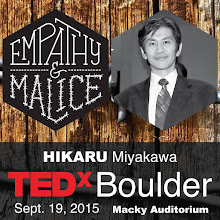
("Honey, could you pass me a fork?")
If I tell you that such request could not have been possible during the time of Leonardo's last years in France, would you believe it?
The fact is that the forks were introduced to France by Catherine de Medici in 1533 when she married Henry II. That was 14 years after the death of Leonardo! It also seems that the forks were not widely used until 16th Century in "Italy." (http://www.hospitalityguild.com/History/history_of_the_fork.htm)
Now the question is: "How many of you have wondered what those people were using as the utensils instead of the forks? Well, that seemingly very innocent and perhaps even imaginative inquiry may carry the bias/prejudice within. ...if we were to consider that the fork is the valuable object. Furthermore, if we were to even think (or feel) that those people back then were barbaric for not using(or even knowing about) the forks to eat, then the prejudice becomes evident. ...and this is one of the aspects of the human consciousness that we must be careful to observe and deal with when we are researching the human history.
I have already mentioned in the earlier blog that the study of the human history is the study of the history/evolution of human consciousness. The above example shows that what we possess as the modern/contemporary consciousness may not be the same in the different time periods. While we have the consciousness that involves the use of the cell phone to call someone and/or the laptop to send the email via internet to communicate globally, it is not the same consciousness of 50 years ago when the people communicated by using the telephone (land line) or sending the telegram. There were no consciousness of recycling (of the plastic) or car-pooling 75 years ago.
What I mean by consciousness is much more than simply having the concept or awareness. It is something which is embedded much deeper into our psyche. It may also include the habitual way of thinking. Many of us may set the alarm clock to wake up on the certain time of the day. "To set the alarm clock to wake up" is the modern consciousness. Many of the painters would go to the art supply store to obtained the "paints in the tubes", while the painters during the Renaissance having no such consciousness, for they had to mix the pigments with the emulsion/vehicles to create their own paints. We can go on and on about the examples.
In order to get to know the era where Leonardo da Vinci had lived, we must first erase our memory and bring our consciousness as close to that era as possible. Moreover, depends on what part of Leonardo's biography we are going to research, we may even have to erase the part of our memory concerning Leonardo. In other words, if we are going to study about "The Last Supper," we have to imagine and consider the person who has not yet painted "Mona Lisa." We are educated, so we already know what Leonardo had done. We know of Leonardo as a person who had completed his biological/physical life. That in-itself may hider us from trying to know Leonardo who was still living. ...and in order to know about the contemporary world of Leonardo, we need to consider the civilization, the culture, the people, of that time having no knowledge about the world to come. The people who lived around the time when Leonardo had commenced the painting of "The Last Supper" (approx. 1495AD) mural did not know about the U.S.A, for Columbus had just re-discovered the continent a few years back. Raphael, who was only 12 years old then, was not yet known to the people as the great painter of Madonna and the child, and he had just lost his father a year before or so. Reformation (Protestantism)was unheard of. The people could not buy the printed Bible...so on and so forth...
We must, in a way, forget everything we know since 1495 in order to be closer to the consciousness of the people back then. Also, we may have to forget the world history from other cultures (and/or the 'foreign cultures' all together), for the common people in that period/era were not necessary informed/educated enough to know what we already know of the ancient cultures, geography, mythologies, etc.
We need to see the world through their eyes and their consciousness.
We need to encounter them as if for the first time.
We must grow with them and walk along the path they are(were) treading.
Whenever I have taught the art/music history to my high school students, I have introduced the simple exercise. It has everything to do with the attempt to "erase the memory of the contemporary civilization/culture."
So, let us do the simple exercise. Close your eyes and sit comfortably. A little by little, by going backwards in time, try to erase the memory of what we know as "our" culture. Erase the laptops, iPods, facebook, cell phones, Academy Awards, sushi, psychoanalysis, cars, airplanes, televisions, radios, World Wars, light bulbs, steam engines, French Revolutions, Beethoven, Shakespeare, printed books, .... until you come to that particular era where people dressed in such and such clothes and did such and such for living, etc. Hold that scene in your mind. Look around you. Walk around the town. ...and be among them as one of them and not as the visitor...
Now, what do you see?




















